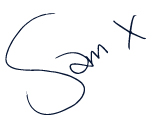I’m sure it’s happened to you, you’ve found a designer or illustrator that you’d like to approach, sent them a friendly email asking for an estimate and feel great that you’ve ticked something off your to-do list. Suddenly you hear a beep and your inbox is full of a million and one questions from your designer or illustrator about your project. Just like that, your task list is full again. One step forward, two steps back.
On the flip side, one of the most common frustrations I hear from other designers and illustrators is the struggle to get clients to provide enough information upfront when discussing a new project. Having to eke it out over a string of emails feels like pulling teeth and as if you are being annoying or demanding.
How can we get the two to align a bit better? Creatives need to look at their enquiry processes and help make it easy for clients, but perhaps explaining why creatives need to know ALL the information might help clients arm us with the info we need in that initial email.
Imagine trying to bake a cake but your recipe only says ‘make cake’. You’d probably have a few questions. Why are we baking a cake? Who is it for? How many people does it need to feed? Where does the cake need to be delivered? Design and illustration projects are similar, although the questions we ask are probably a bit different, more about specifics of style, tone, and audience rather than dietary requirements and icing!
Regardless of what questions we’re asking there is always a reason behind them. We are going to dig a bit deeper into the motivation behind us asking a mountain of questions:

To avoid assumptions
First and foremost, we’re trying to avoid making bad assumptions. Because as the aphorism goes, when you assume, you make an “ass” out of “u” and “me”. Without clear information, we have no choice but to speculate about what you might be asking. The chances of our wild speculations being correct are pretty low, and if we base our estimate, schedule or worse, the design itself on the unsteady ground of guesswork then, like a house of cards, it will all come crumbling down at some point. Trust me, I know.

To dig deep into the problem
Good designers and illustrators are problem solvers. We take a communications problem and deliver a tangible creative solution. Understanding problems as vividly as possible is not just part of the job – it IS the job. Limited information leaves us in the dark which leads to below-par work and frustration on all sides. The more we can learn about the nature of the challenge, the better we can engineer an effective creative solution. To do that we need to channel our inner detectives and dig beneath the surface to uncover all the details crucial to solving the case.

To be able to guide you
We want to be able to use our expertise to guide you. To be an effective advisor, we need information, otherwise we’re wandering aimlessly, not knowing where we’re going or why. Every bit of intel we get illuminates the map and opens up possibilities. Understanding the boundaries and scope of a project fuels our creativity and helps us to think outside the box. When you share the full details with us, we can act as your trusted guide, using our knowledge and experience to strategically plot the best path forward.

To head off disasters
With all projects, there are hidden requirements that you may not even think to mention, things like brand guidelines, content needs, technical specs, production issues, deadlines and so on. Our aim is to uncover important details that could derail a project if overlooked – by the time they come to light we could be a runaway train. The more information we have upfront, the better we can plan and optimise the process. That means providing you with a more accurate timeline and budget, sourcing the right resources, and delivering high-quality work more efficiently without the threat of a looming disaster. That’s a win-win, my friends.
The questions we ask aren’t an interrogation, they’re an essential part of building a collaborative partnership. The next time we start firing off questions that may seem excessive, just remember: we’re not trying to be difficult. We’re doing our due diligence to ensure we do the best possible job. Your willingness to provide detailed information will be key to making that happen.
To find out what to include in an enquiry email read my How to Write an Illustration Brief blog post. Or if you’d like to discuss working on a project together, drop me a line and I’ll unleash my questions on you!

